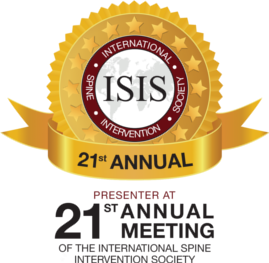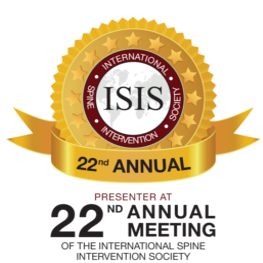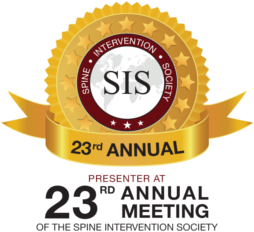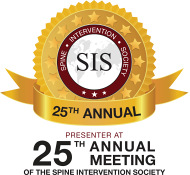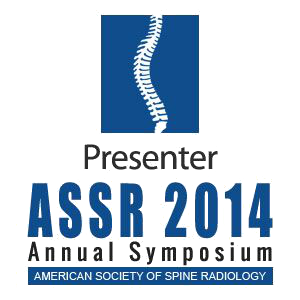Recovering from sciatica can be lengthy, and sometimes you do not know what to expect. Sometimes, the pain will be better, and on others, you will feel worse, making it challenging to know if your condition is improving. You can alleviate sciatica symptoms with the right treatment and enjoy a healthy life. With the proper treatment and therapy, sciatica can even be cured permanently.
Given the mixed signs sciatica patients experience, how can you tell that you are recovering from the condition? Knowing that your sciatica is improving helps you feel hopeful and happy.
Types Of Sciatica
There are two types of sciatica, but the effects are the same regardless of your type.
Sciatica-like Conditions
These conditions appear like sciatica but occur for other reasons associated with the sciatic nerve or the nerves that fuse together to form it.
True Sciatica
This is an injury or condition that directly affects your sciatic nerve.
Doctors always refer to both types as sciatica. However, their distinction only matters when your doctor establishes how to treat it.
The Common Symptoms Of Sciatica
Herniated discs are the cause of around 90 percent of sciatica cases. A herniated disc can compress your sciatic nerve. The sciatic nerve runs from the hip to the lower leg. If you have sciatica, you will likely experience radiating pain, numbness, tingling, and other discomforts. The discomfort can appear on:
- Hips
- Buttocks
- Lower back
- Legs
- Feet and ankles
The pain often originates from the buttocks, hips, or thighs. As the condition gets worse, the pain moves further down the leg. In most cases, you will only experience pain on one side of the body. You should contact a doctor immediately if you have sciatica and experience pain on both sides of your body. Pain on both sides of the body can indicate an underlying, more serious condition.
Whether Sciatica Can Improve Without Treatment
In some cases, sciatica can improve without treatment. Some patients notice remarkable improvement after using anti-inflammatory drugs for several months. You might even realize notable improvement after taking drugs for only ten days. However, the symptoms can sometimes recur, and your pain might worsen. You might need steroid injections if your pain recurs or does not improve with anti-inflammatory drugs. Experts sometimes recommend decompression surgery to relieve pain on the sciatic nerve. There is no significant difference in the effectiveness of surgical and non-surgical treatments. In addition, people respond to treatment differently.
Signs That Sciatica Is Healing
Sciatica symptoms can persist for months. Patients being treated with anti-inflammatory medication can continue to experience symptoms for up to two years. How can you know that your symptoms are getting better?
Centralized Sciatic Pain
Sciatic Pain originates from the hip area and radiates towards the lower leg as it worsens. One of the leading signs that the condition is improving is when the pain becomes more centralized. Centralization occurs when sciatic Pain starts to recede backward toward the hip. The pain can still be intense. However, if it affects your leg less than before, it is a sign that your condition is improving. Your sciatica is improving if you feel more pain around your hips and spine than your legs.
Pain centralization can sometimes occur even if you have not taken any action to treat your herniated disc. Not all patients require medication, steroid injections, or other treatments to eliminate sciatica pain. However, these treatments are crucial if you experience severe pain and can speed up the recovery process.
Less Intense And Frequent Pain
Pain centralization is a good sign, but the primary goal is to eliminate the pain. Therefore, any reduction in pain intensity and frequency is a good sign. As your condition improves, you will notice that you experience less pain when you cough or sneeze. You will also experience pins, needles, or tingling instead of sharp pains in your hips or legs.
However, simply because your pain does not improve does not mean that your condition is worsening. You might still experience intense pain in your hip, but if the pain is centralizing, it is a sign that you are improving.
Enhanced Mobility
Sciatica pain can make it challenging to walk or move your legs. Therefore, any pain reduction or improvement in mobility is a sign that you are improving. Your condition improves if you can engage in more activities than before. Consistent sciatica massage and self-mobilization can heal soft tissue. Massage and exercise can also desensitize the sciatic nerve, thus improving mobility. Patients must be active in their recovery journey to enhance the recovery process.
Reduced Muscle Spasms
A common sciatica symptom is muscle spasms. Muscle spasms can worsen your condition by trapping your nerves, worsening the pain. That's why doctors sometimes recommend antispasmodic drugs or muscle relaxers to curb sciatica pain.
If you experience reduced muscle spasms in your back, this is an indication that the sciatica is improving. The condition might not even recur.
Your Back And Leg Muscles Feel Stronger
Your back and leg muscles might feel weak with a trapped sciatic nerve. Muscle weakness is a manageable sciatica symptom. You can determine whether your condition is improving by monitoring your muscle strength. Regaining muscle strength indicates that you are getting better. You might notice that you can stand longer or walk further than before.
Less Pain During A Straight Leg Raise Test
A common test for diagnosing sciatica is the straight leg raise test. During this test, a patient lies on their back while their doctor raises their leg at the hip with the leg fully extended. If the patient experiences discomfort when their leg reaches 30 degrees, it can be a sign that the patient has sciatica. For patients with sciatica, the pain can get worse when their leg is extended between 30 and 70 degrees.
You can perform this test at home with the help of a relative or a friend. This test can help you monitor your pain levels and determine if you are improving. You are getting better if you experience reduced pain when you perform this test.
Imaging Tests Reveal Positive Results
In most cases, doctors do not recommend diagnostic tests for sciatica patients. However, the tests can be necessary if your doctor suspects you have a more severe underlying condition. Your doctor can also recommend diagnostic testing if your symptoms worsen or do not resolve within several months.
After the initial diagnostic tests for sciatica, your doctor can recommend additional tests occasionally to determine whether your condition is improving. These tests can reveal an improvement in sciatica.
Sciatica Recovery Phases
The Sciatica recovery process can fall under three main phases:
- Centralization
- Desensitization
- Nerve Rehabilitation
Your pain might still be intense at the centralization stage. However, you will notice that it recedes to your hips and lower back.
The pain has reduced significantly during the desensitization phase. However, the patient still experiences numbness and weakness.
Nerve rehabilitation is characterized by reduced pressure on the sciatic nerve. Since the nerve is no longer under pressure, the patient can enjoy a greater movement range, enabling them to return to their normal activities.
You should note that most patients do not experience predictable recovery from sciatica. A patient can find that their symptoms have reduced, but only for the patient to get worse the following day. You should not feel discouraged. With the proper treatment and management, most patients fully recover from sciatica. All you need to do is partner with committed pain management experts.
Factors That Can Delay Sciatica Recovery
If your sciatica takes too long to heal, you can wonder what is delaying the healing process. Some of the reasons why your sciatica can be worsening include:
Having A Spinal Mass Or Tumor
A cancerous mass can exert pressure on your sciatic nerve in rare situations. A malignant peripheral nerve sheath tumor is one very rare type of tumor that can develop. If you have a cancerous tumor, you might not realize the improvement of your sciatica until the tumor is removed.
Lifestyle Issues
Gentle exercises can sometimes reduce sciatica. Mobilizing the sciatic nerve can help improve the symptoms by reducing its sensitivity. Your doctor can recommend gentle stretching and exercise as part of the treatment. Spending much time sitting and living a sedentary lifestyle can aggravate sciatica symptoms.
Wear And Tear
Spinal stenosis, caused by wear and tear on the spine, is the narrowing of the spaces within the spine. This narrowing can compress your nerves, leading to sciatica.
Infections
An epidural abscess is the gathering of pus that develops between the membrane of the spinal cord and the bones in your spine. This can result in swelling that exerts pressure on your nerves, leading to sciatica.
Age And Underlying Health Conditions
Younger people usually recover faster than older people. However, several underlying health issues can also reduce the ability of your body to recover. The following conditions can slow your healing from sciatica:
- Smoking
- Malnutrition
- Alcoholism
- Heart disease
- Obesity
- Diabetes
- High blood pressure
Injury And Reinjury
If an injury causes your sciatica, you can have reaggravated the injury that initially caused it if your symptoms get better and then worse. Repetitive overuse injuries and sudden injuries can cause sciatic symptoms. The common cause of sciatica is herniated discs.
What You Should Do If Your Sciatica Is Worsening
Home treatment can help you recover from sciatica. However, you should visit a medical professional to determine if you are dealing with sciatica. You can find the following methods helpful if you have not tried treating your symptoms at home:
Physical Therapy, Stretching, And Exercise
A physical therapist can assist you in stretching tight muscles and strengthening weak muscles that might be causing your pain. The United Kingdom's National Health Service recommends resuming normal activities and gentle exercise. However, you should carry out these activities under the guidance of a professional.
Nonsteroidal Anti-Inflammatory Drugs (NSAIDs)
NSAIDs like ibuprofen or aspirin can assist you in managing inflammation, swelling, and pain.
Heat
After the first few days, you can apply heating pads or hot packs to the sore area for 15 to 20 minutes daily. This will stimulate the flow of blood to the injured area.
Cold
Try applying a cold compress or an ice pack to the pain area for about 20 minutes several times daily.
Visiting Your Doctor
You should visit a medical professional if you have already tried home remedies, but your pain is getting worse. Your doctor can prescribe stronger painkillers, muscle relaxers, or other medications. Sometimes, your doctor can recommend epidural steroid medications, which are injected into the area surrounding your spinal cord to reduce inflammation.
In some severe cases, your doctor can recommend surgery. Severe cases can include:
- Severe weakness in muscles, which leads to loss of bladder or bowel control
- Pain that has not improved with other treatments, and
- Worsening pain
Microdiscectomy is one of the options that your doctor can perform. This minimally invasive procedure normally provides quick relief of symptoms. Microdiscectomy removes the disc material that exerts pressure on your sciatic nerve.
Your doctor can also consider performing a laminectomy. This procedure involves removing a section of the bone to reduce pressure on the spinal cord.
The Period Sciatica Takes To Heal
Sciatica can typically take four to six weeks. However, some people still experience symptoms after one year. There have never been clear reasons why some individuals suffer chronic sciatica, and others do not. The following are some risk factors associated with chronic sciatica:
- Failure to engage in regular moderate-intensity physical activity
- Improper lifting techniques
The variables that can determine how fast you can recover from sciatica include:
- Individuals who believe there is hope tend to be more consistent and do not allow anything to stop them.
- People who read a lot recover faster. Individuals with higher attention spans tend to be self-educated on sciatic recovery and are likely to follow through with successful treatment.
- Individuals who observe their daily habits and posture recover faster because they can more quickly adjust behaviors like sitting and sleeping positions.
- People who adhere to the instructions and advice of top-level healthcare professionals recover faster. These individuals recover more quickly than those who fail to follow through with care.
- Sedentary lifestyle — You will heal more slowly if you sit all day for work or watch TV.
- Stress levels — You will heal more slowly with high-stress levels.
- Rest levels—A lack of sleep slows recovery time. Your body requires sleep and rest to rebuild.
- Individuals who consume a lot of nutrients in their calories recover more quickly than those who primarily eat processed foods.
- Other health problems like body weight, alcohol abuse, tobacco use, high blood pressure, heart disease, and diabetes all affect recovery rates and make the time to recover longer.
- Overall health and healthy people recover faster from
Preventing Recurrent Sciatica
Altering your lifestyle can help prevent recurring sciatica symptoms. Some of the lifestyle changes can include:
- Minimizing your chances of falling by keeping the floors of your house free from clutter and wearing sturdy shoes
- Avoid smoking
- Engaging in exercises that are unlikely to cause lower back injuries
- Avoid bending your back when lifting heavy objects
- Minimize sitting and sit with good posture
- Regular exercise and eating a balanced diet
Sciatica And Weight Gain During Pregnancy
Pregnant women usually suffer sciatica, but it is not associated with pregnancy weight changes. Two major factors explain why it is more likely to occur during pregnancy. They include:
Pregnancy Hormones
Pregnancy-related hormones cause a loosening of ligaments and connective tissue in your spine. The loose ligaments and connective tissue make your spine more flexible. This will cause pinched nerves, disk slippage, and sciatica when this happens.
Position And Weight Of The Fetus
The sciatic nerve can be compressed because of the position and weight of the fetus, leading to sciatica. There are, however, ways to reduce sciatic pain during pregnancy, and the pain should stop after birth. Some of the ways can include:
- Heat
- Warm showers
- Massage therapy
- Physical therapy
- Medications and other measures
Find Reliable Sciatica Treatment Near Me
In most cases, sciatica pain disappears after several months. However, the pain can persist even for years, depending on the measures you take to alleviate it and the treatment you seek. You should contact an expert when you first notice signs of sciatica pain. For some patients, the pain lasts longer than average, while others experience recurring sciatica. You can prevent sciatica from recurring by avoiding bending your back inappropriately, especially when lifting. You should also exercise regularly and observe a healthy diet.
If you have been experiencing sciatica pain in Los Angeles, our experts at LAMIS can help. With our help, you will notice signs of sciatica improvement within a few weeks or even days. We understand that every patient is unique. Therefore, we create unique and personalized treatment plans for every patient when developing treatment programs. Contact us today and say goodbye to sciatica pain. Call us at 310-734-6088 to speak to one of our experts.

